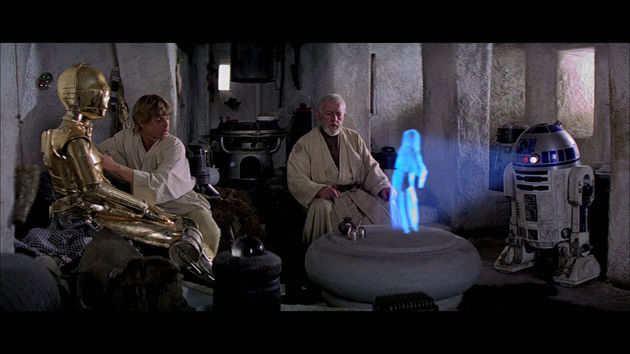NOT holography !
The term '3D' of the beginning of the 21st century is now passé. It ceased to be commercial enough and it is now mostly associated with 3D-printing. And along with it went the 3D television sets (active or passive) whereas the numbers at the box-office for 3D movie shows are in a downward spiral. And now what? Now came the turn of 'holography' as the next commercial catching term with a futuristic allure expressing the social and cultural need for life-realistic representation of the physical world.
And suddenly all became... 'holographic'.

From virtual holographic assistants at airports to augmented reality applications and devices of Microsoft, Google, Sony and the like. From lenticular printing to laser-etched crystals and from CNN TV-News studio broadcasts to deceased artists reappearing on stage. From the new holographic movie halls in the USA to reflective pyramids and cubes to stereoscopic portable devices (cell-phones, monitors, game-machines). Even Hollywood film industry stepped in with a motion picture titled 'Hologram for the King' !
But are all these applications related to display holography? The answer is ...hardly at all. Simply, this is NOT holography -or better say- only by name since 'holography' as a seemingly more sophisticated term appears to enhance commercial attraction. In reality, these are mostly based on various stereoscopic projection effects or the digital reincarnation of well-known theatrical tricks of the early 19th century.
The unconditional use of the term 'holography' has added to the confusion in semantics of the non-scientific general public to such an extent that the Int'l Hologram Manufacturers Association (IHMA) has often tried to intervene -though practically in vain. [Watch here a presentation on the subject by Dr. Mark Deakes, Secretary of the ΙΗΜΑ, from the recent Holography Conference 2016 in Warsaw]. So has the international community of holographers to the point where even a thematic page on Facebook (see below) titled "This Is Not a Hologram" is being regularly updated as novel 'holographic' gadgets and techniques make their debut in the fast-changing digital arena !
For further food-for-thought, read here an excellent article titled 'Holograms: The Story of a Word and its Cultural Uses' by Prof. Sean Johnston of the University of Glasgow, the recognized historian of Holography, as published in Leonardo magazine (Vol.50, No 5, 2017) (NOT for redistribution).
Facebook "This is Not A Hologram"


